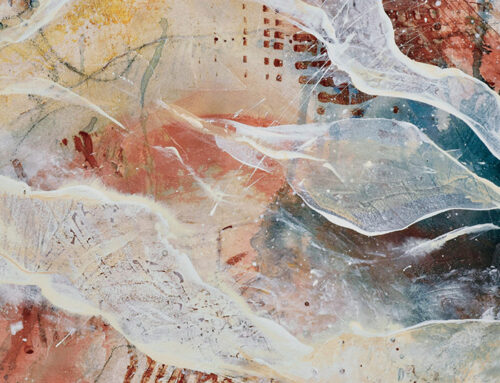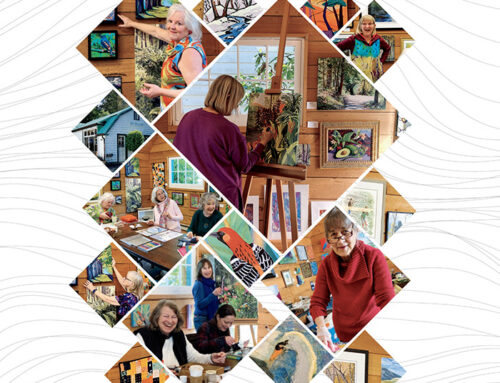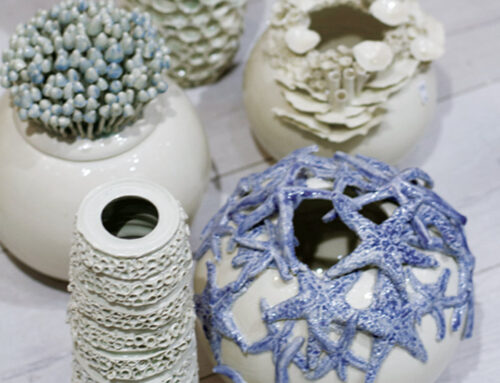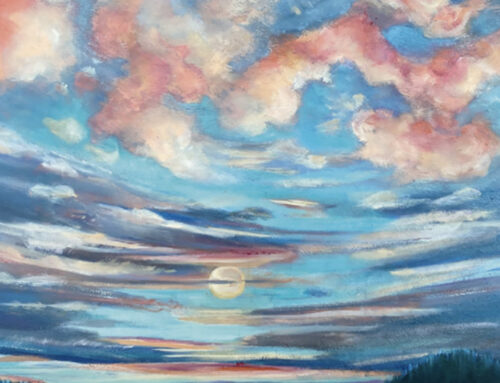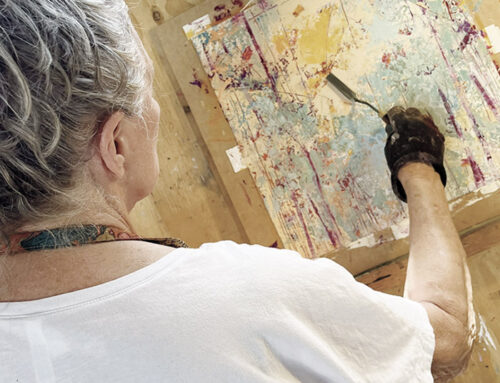There are few things more satisfying than working with soapstone. In the stone are beautiful greys and greens, the natural colours we see all around us. The stone’s buttery, warm feel as it takes shape and the ease with which it can be carved and finished has been recognized and prized by cultures all over the world.
It is Bowen Island artist Patrick West’s favourite medium too.
“I use other stones also like alabaster, clorite, wonderstone (from South Africa), sandstone, but I prefer soapstone to all others. I enjoy the texture and the speed I can work it. Because I don’t like to use power tools, and harder stones like marble take such a long time to sculpt. Carving soapstone is a bit like 3-D doodling.”
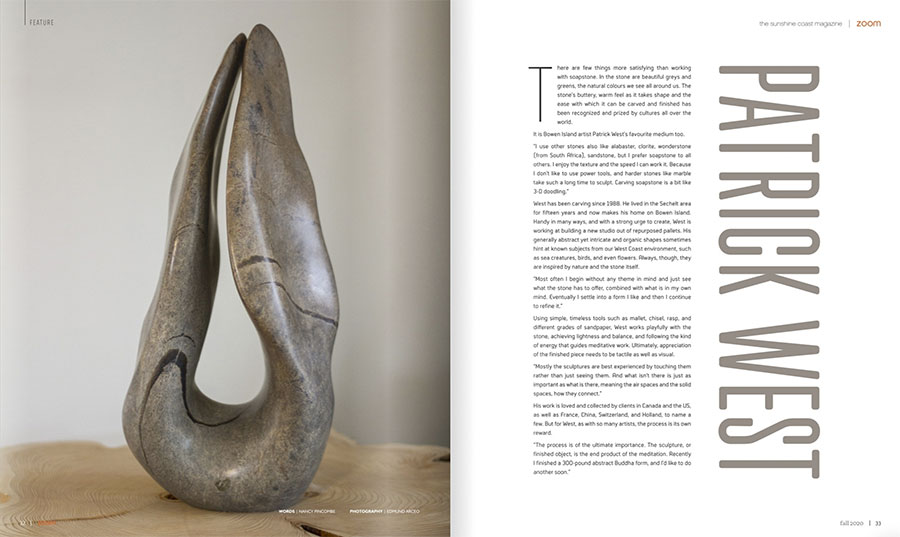
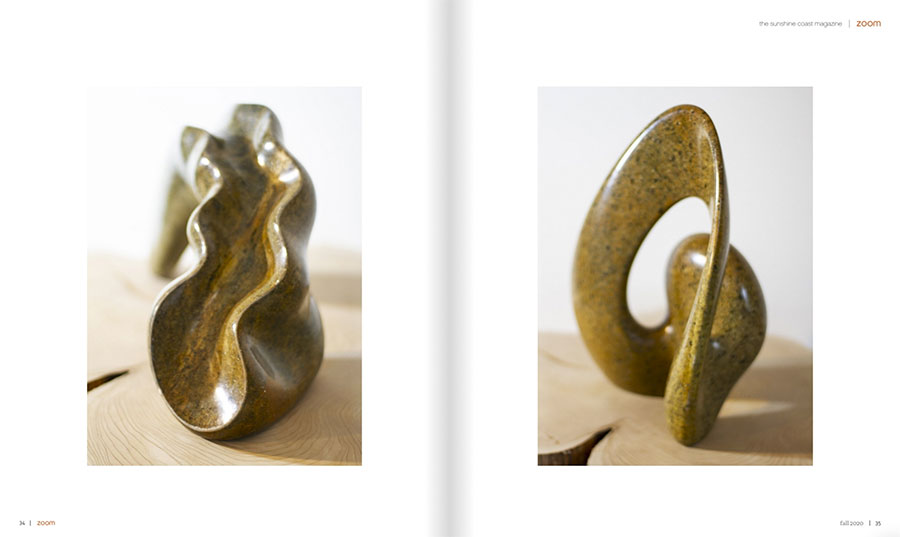
West has been carving since 1988. He lived in the Sechelt area for fifteen years and now makes his home on Bowen Island. Handy in many ways, and with a strong urge to create, West is working at building a new studio out of repurposed pallets. His generally abstract yet intricate and organic shapes sometimes hint at known subjects from our West Coast environment, such as sea creatures, birds, and even flowers. Always, though, they are inspired by nature and the stone itself.
“Most often I begin without any theme in mind and just see what the stone has to offer, combined with what is in my own mind. Eventually I settle into a form I like and then I continue to refine it.”
Using simple, timeless tools such as mallet, chisel, rasp, and different grades of sandpaper, West works playfully with the stone, achieving lightness and balance, and following the kind of energy that guides meditative work. Ultimately, appreciation of the finished piece needs to be tactile as well as visual.
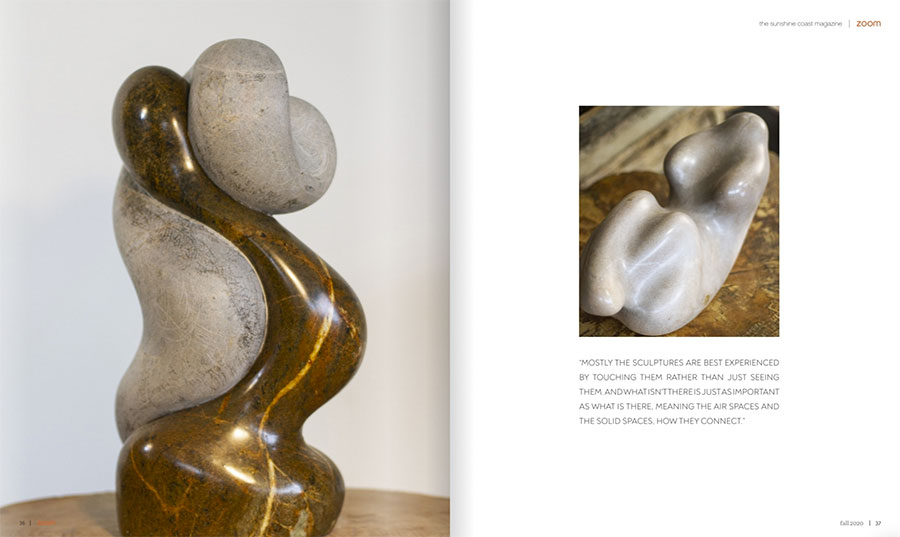
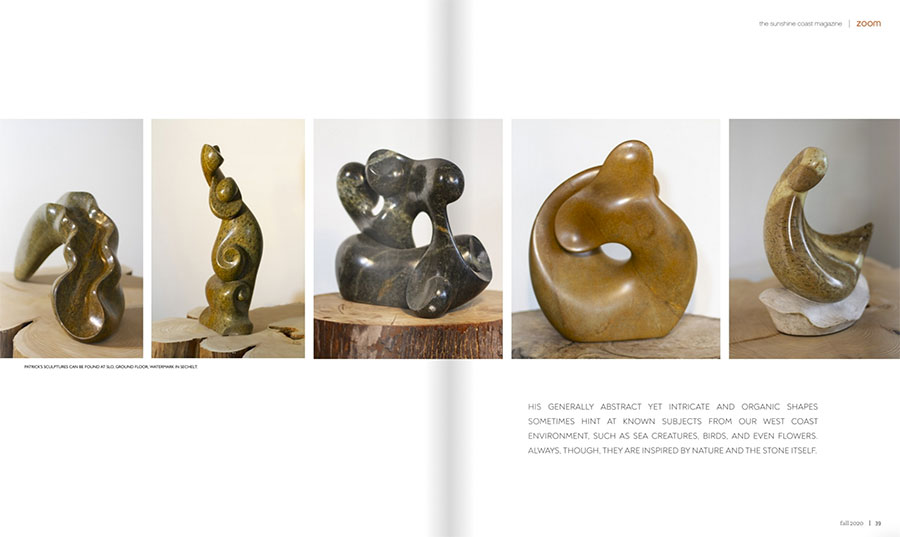
“Mostly the sculptures are best experienced by touching them rather than just seeing them. And what isn’t there is just as important as what is there, meaning the air spaces and the solid spaces, how they connect.”
His work is loved and collected by clients in Canada and the US, as well as France, China, Switzerland, and Holland, to name a few. But for West, as with so many artists, the process is its own reward.
“The process is of the ultimate importance. The sculpture, or finished object, is the end product of the meditation. Recently I finished a 300-pound abstract Buddha form, and I’d like to do another soon.”


